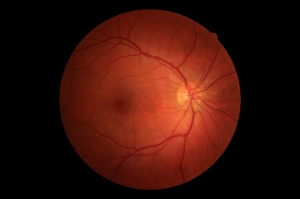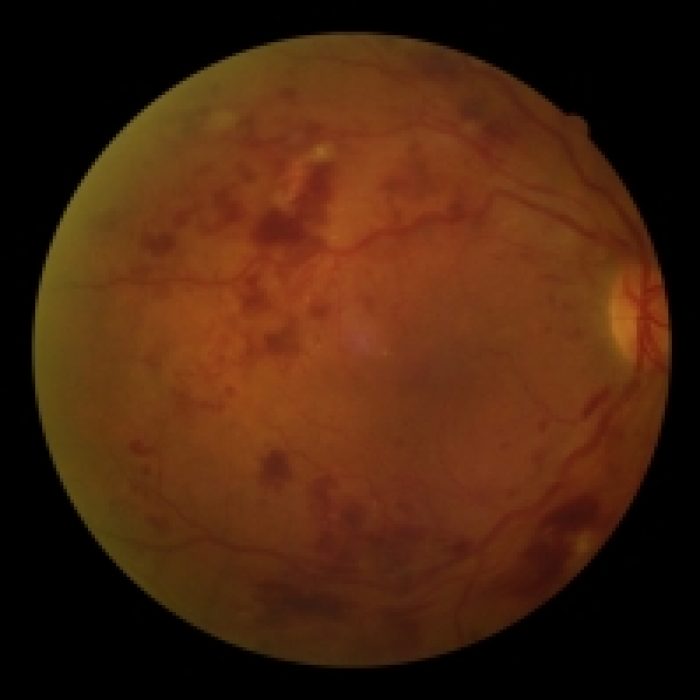Diabetes
Diabetes
Diabetes is a disease in which the body either does not produce enough insulin or does not properly use the insulin it does produce. Insulin is a hormone necessary to convert sugar, starches, and other food into energy needed by the body. The disease affects approximately 17 million people in the United States, a third of which are unaware of its presence. Both Type 1 and Type 2 diabetics are at risk for vision loss.
Between 40-45% of Americans diagnosed with diabetes have some stage of diabetic retinopathy. Each year 12,000 to 24,000 Americans lose their sight from the disease. It is the leading cause of new blindness in U.S. adults.
The retina is the innermost layer of the eye, and is composed of millions of tiny nerve fibers connected at one end to the optic nerve, and at the other to the retinal receptors. This “neural layer” is nourished by very small blood vessels which help keep everything functioning smoothly.
Healthy retina

The blood sugar imbalance inherent with diabetes can cause a weakening of the blood vessel walls and a subsequent seeping of fluid or blood into the retina. As areas of the retina swell, the tissue in those areas can die, initially causing a loss of vision in just those particular locations.
As you can imagine, progression of leakage leads to progressive swelling, which leads to further loss of vision. Diabetic retinopathy is usually severe before the patient notices the visual changes.
It is ABSOLUTELY ESSENTIAL that diabetics have a full eye examination ANNUALLY. Baseline digital retinal photos need to be obtained after diagnosis, and annually afterwards if any retinopathy is present.
Diabetic retinopathy

We look for:
– any leaking blood vessels
– retinal or macular swelling
– telltale fatty deposits in the retina
– damaged nerve tissue
We also look for the presence of glaucoma or cataracts, the incidence of which is significantly higher in diabetics.
Scatter laser surgery can slow or even prevent progression of retinopathy. New injectable pharmaceuticals are also proving to be very effective. The name of the game with diabetic retinopathy is similar to that of glaucoma… PREVENT FURTHER DAMAGE.
There is no “cure” as of this writing. Treatment of diabetic retinopathy, though still a challenge, continues to improve in its effectiveness (for example, intra-ocular injections of new therapeutics can be quite effective). The true challenge lies in detection – not so much because detection is difficult, but more so because many diabetic patients are not aware of the potential eye problems. They simply do not come in for eye exams.
One last important point – the potential for eye problems with diabetes can be lessened dramatically with good blood sugar control.


